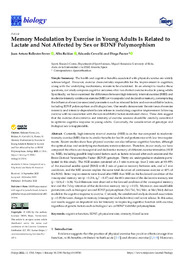Por favor, use este identificador para citar o enlazar este ítem:
https://hdl.handle.net/11000/37962Registro completo de metadatos
| Campo DC | Valor | Lengua/Idioma |
|---|---|---|
| dc.contributor.author | Ballester Ferrer, Juan Arturo | - |
| dc.contributor.author | Roldan, Alba | - |
| dc.contributor.author | Cervelló, Eduardo | - |
| dc.contributor.author | Pastor, Diego | - |
| dc.contributor.other | Departamentos de la UMH::Ciencias del Deporte | es_ES |
| dc.date.accessioned | 2025-11-07T10:41:00Z | - |
| dc.date.available | 2025-11-07T10:41:00Z | - |
| dc.date.created | 2022 | - |
| dc.identifier.citation | Biology | es_ES |
| dc.identifier.issn | 2079-7737 | - |
| dc.identifier.uri | https://hdl.handle.net/11000/37962 | - |
| dc.description.abstract | Currently, high-intensity interval exercise (HIIE) is on the rise compared to moderate-intensity exercise (MIE) due to its similar benefits for health and performance with low time requirements. Recent studies show how physical exercise can also influence cognitive function, although the optimal dose and underlying mechanisms remain unknown. Therefore, in our study, we have compared the effects on visuospatial and declarative memory of different exercise intensities (HIIE vs. MIE), including possible implicated factors such as lactate released after each session and the Brain-Derived Neurotrophic Factor (BDNF) genotype. Thirty-six undergraduate students participated in this study. The HIIE session consisted of a 3 min warm-up, four 2 min sets at 90–95% of the maximal aerobic speed (MAS) with 2 min of passive recovery between sets, and a 3 min cooldown, and the MIE session implies the same total duration of continuous exercise at 60% of the MAS. Better improvements were found after HIIE than MIE on the backward condition of the visuospatial memory test (p = 0.014, ηp2 = 0.17) and the 48 h retention of the declarative memory test (p = 0.04; d = 0.34). No differences were observed in the forward condition of the visuospatial memory test and the 7-day retention of the declarative memory test (p > 0.05). Moreover, non-modifiable parameters such as biological sex and BDNF polymorphism (Val/Val, Val/Met, or Met/Met) did not modulate the cognitive response to exercise. Curiously, the correlational analysis showed associations (p < 0.05) between changes in memory (visuospatial and declarative) and lactate release. In this sense, our results suggest an important role for intensity in improving cognitive function with exercise, regardless of genetic factors such as biological sex or BDNF Val66Met polymorphism. | es_ES |
| dc.format | application/pdf | es_ES |
| dc.format.extent | 14 | es_ES |
| dc.language.iso | eng | es_ES |
| dc.publisher | MDPI | es_ES |
| dc.relation.ispartofseries | 11 | es_ES |
| dc.relation.ispartofseries | 10 | es_ES |
| dc.rights | info:eu-repo/semantics/openAccess | es_ES |
| dc.rights | Attribution-NonCommercial-NoDerivatives 4.0 Internacional | * |
| dc.rights.uri | http://creativecommons.org/licenses/by-nc-nd/4.0/ | * |
| dc.subject | Cognitive function | es_ES |
| dc.subject | BDNF | es_ES |
| dc.subject | Physical exercise | es_ES |
| dc.subject | Intensity | es_ES |
| dc.subject | Blood lactate | es_ES |
| dc.subject.other | CDU::7 - Bellas artes::79 - Diversiones. Espectáculos. Cine. Teatro. Danza. Juegos.Deportes | es_ES |
| dc.title | Memory Modulation by Exercise in Young Adults Is Related to Lactate and Not Affected by Sex or BDNF Polymorphism | es_ES |
| dc.type | info:eu-repo/semantics/article | es_ES |
| dc.relation.publisherversion | https://doi.org/10.3390/biology11101541 | es_ES |

Ver/Abrir:
Ballester-Ferrer et al. 2022b.pdf
2,35 MB
Adobe PDF
Compartir:
 La licencia se describe como: Atribución-NonComercial-NoDerivada 4.0 Internacional.
La licencia se describe como: Atribución-NonComercial-NoDerivada 4.0 Internacional.
.png)